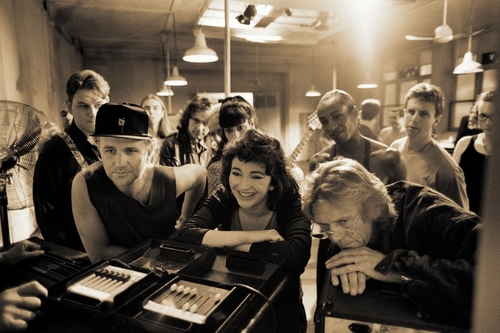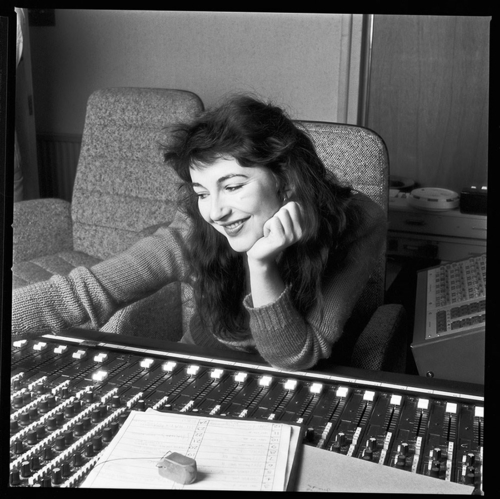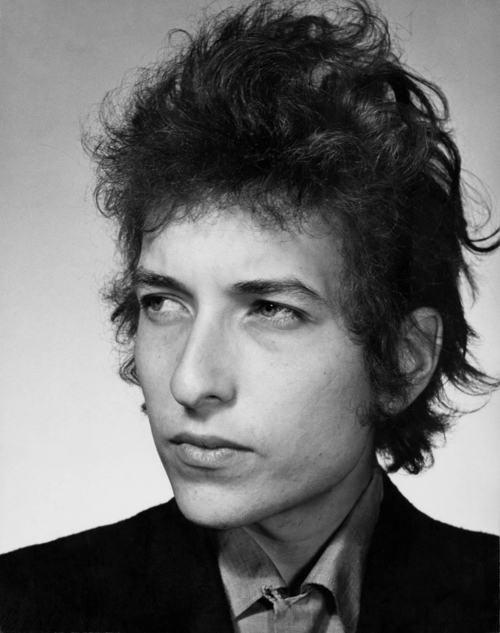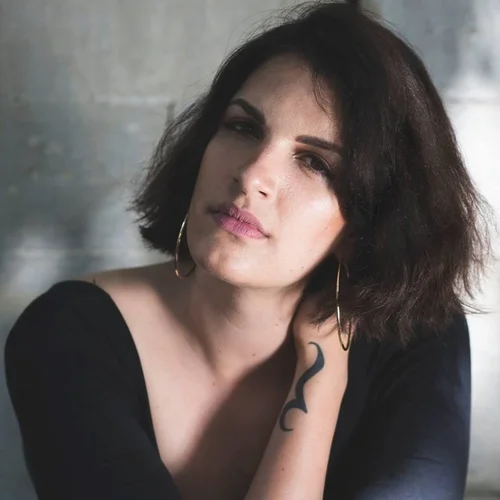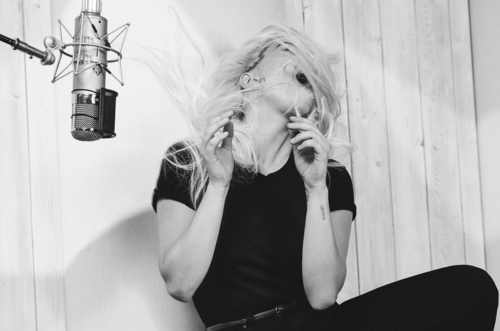FEATURE:
Talking Heads
IN THIS PHOTO: Emilia Clarke/PHOTO CREDIT: Emilia Clarke/Facebook
Music as a Powerful Form of Therapy
__________
I often wonder how far we can take music and whether it...
PHOTO CREDIT: @zacfriesen/Unsplash
can be used as a multi-level form of therapy. It is already used for this very thing and, whether it relates to memory or physical recovery, there is huge power to be mined. At the moment, it is hard to say how best to harness music – across its layers, genres and time periods – and integrate it into mainstream medicine. I have written about music as a way to combat mental-health problems (or provide aid at least) and as a form of emotional support. Whilst it is hard to say how effective music is when it comes to physical improvement and faster recovery, there is still a way to go – we know that, in some cases, there is a link between music’s power and the impact it has on the body. I was struck by a story that sort of came out of the blue. It involve Game of Thrones actor Emilia Clarke and traumatic events she has gone through. In fact, as this BBC article explains she almost died from two life-threatening aneurysms:
“A Game of Thrones star has revealed she had to undergo brain surgery between two seasons of the hit series.
Writing in The New Yorker, Emilia Clarke said she suffered two "life-threatening" aneurysms.
The actor, who plays Daenerys Targaryen, underwent surgery twice, leading to "terrible anxiety" and panic attacks.
Despite thinking she would die, Clarke has now recovered beyond her "most unreasonable hopes".
The actress, who is from Oxford, plays a young princess sold into marriage who she describes as "a figure of power and self-possession"....
PHOTO CREDIT: @gpiron/Unsplash
Clarke experienced her first aneurysm in 2011. She had been working out before collapsing in a toilet with "shooting, stabbing, constricting pain".
"In my worst moments, I wanted to pull the plug," she said. "I asked the medical staff to let me die."
She recovered enough to return to filming Season 2 of Game of Thrones but said: "I was often so woozy, so weak, that I thought I was going to die."
She says she is now "at a hundred per cent" and has helped develop a charity that supports people recovering from brain injuries and strokes”.
You can read about her experience in an article she wrote for The New Yorker and it is a very emotional and frank account. There has been a lot of reaction on social media and in the media regarding Clarke’s admissions and speaking out. It is hard to talk about something as saddening and traumatic as a brain aneurysm, let alone two. It seems like, let’s hope, she is okay now and she will not have to undergo anything like it again. It gets me thinking about her experience and how hard it must have been to talk about things. This article in Vogue explains her post-surgery life and how, in the face of a difficult time, she came out with something positive:
“Perhaps more important than her acute treatment, however, is what happened after she left the operating room. Following her first surgery in London in 2011, Clarke experienced aphasia - a condition that left her incapable of remembering her own full name. The experience nearly broke her: “I could see my life ahead, and it wasn’t worth living...
PHOTO CREDIT: Carlota Guerrero for The New Yorker
I am an actor; I need to remember my lines.” Naturally, her second procedure in New York in 2013 triggered yet more frantic worry about cognitive loss. “Would it be concentration? Memory? Peripheral vision? Now I tell people that what it robbed me of is good taste in men. But, of course, none of this seemed remotely funny at the time,” she writes.
Clarke shares on the website for her newly-launched charity, SameYou. “As more people recover from brain injury and stroke because of improvements in acute care, we urgently need a major initiative to propel neurorehabilitation support services to the forefront.” Despite its relatively low profile in public health discussions, traumatic brain injury is in fact the leading cause of mortality in young adults. SameYou will work in partnership with the Royal College of Nursing, Stroke Association, Spaulding Rehabilitation Network, and Nursing Now to increase both funding and research.
In typically self-deprecating fashion, Clarke took to Instagram Stories to speak directly to her 19.1 million followers about the news, saying: “So, today is a doubly important day. Number one, I launched a charity, which is… sizeable. Number two, I learned how to use Instagram stories, possibly the more important one… There’s this thing where you swipe up - ahhh! - and that takes you straight to the charity webpage.” She continued on her main feed: “I kept quiet about something that’s happened to me for quite a few years…And I really sincerely would love to hear what you think. I’d love to hear your stories. Because that’s why I started this.” SameYou is now taking donations through its JustGiving page - and has racked up 37,000 followers on Instagram in less than 24 hours. Khaleesi would be proud”.
I know there are thousands of people around the world who suffer physical, psychological and emotional trauma and I feel, hearing Clarke’s story, there is a chance to move music into a therapeutic setting. Her charity, SameYou, is racking up followers and, if you can, give a donation and help support a great organisation that is giving a voice to those who have gone through the same as her. I have already made an approach, through her agency, looking to bring my talents/blog to her charity. Not in a collaborative way but trying to set up an initiative where music events can raise funds for SameYou; open dialogue regarding music and how it can used to help in the recovery and treatment of patients. I am not sure how Clarke managed to get through her experience: the fact she was thinking about ending things shocks and makes me wonder whether there are ways we can help those who have to go through awful challenges. I know people who have suffered crashes and accidents who have used music as part of their rehabilitation. Many who suffer from memory issues and neurological diseases are played music and, in many cases, it can unlock memories and access parts of the brain other therapies cannot. There is infinite power when we think of music and I think, in cases where someone goes through an ordeal and surgery; music can be a huge aid and sense of support.
PHOTO CREDIT: @hyingchou/Unsplash
Emilia Clarke would have had her family around but one wonders, in her lowest moments, how she managed to find a way through. It is never possible to predict what life will throw at you. Whether it is a sudden attack (of violence) or a degenerative illness, it is always awful and people feel isolated and vulnerable. I have experience of people I know suffering illness and there are always periods where there is depression and confusion. I do wonder, in the times when things are bleak and there seems to be no hope, what the answer is. Music is not a cure-all and instant remedy: it can be difficult discovering a way to ensure music fits in a variety of situations.
Perhaps it would not be as simple as playing music to patients but I do feel like music’s spectrum and universe can, in so many cases, help enormously. I often find, when I am particularly exhausted and depressed, music is a huge help and can unlock something deep inside me. We know how music affects people and the fact is, in many cases, it can be hugely motivating. This article explores how music can change lives and aid in cases of recovery:
“All forms of music may have therapeutic effects, although music from one's own culture may be most effective. In Chinese medical theory, the five internal organ and meridian systems are believed to have corresponding musical tones, which are used to encourage healing.
Types of music differ in the types of neurological stimulation they evoke. For example, classical music has been found to cause comfort and relaxation while rock music may lead to discomfort. Music may achieve its therapeutic effects in part by elevating the pain threshold.
Music may be used with guided imagery to produce altered states of consciousness that help uncover hidden emotional responses and stimulate creative insights. Music may also be used in the classroom to aid children in the development of reading and language skills. Receptive methods involve listening to and responding to live or recorded music. Discussion of their responses is believed to help people express themselves in socially accepted ways and to examine personal issues”.
There are other articles that break down the ways in which music can help us so, more now than ever, I think it is time to bring it more to the front. Not that people like Emilia Clarke are poster-girls/boys when it comes to this sort of thing but she has spoken boldly about her emotional state following her aneurysms. It is debatable that, were it not for her career and family, she might have gone somewhere very black indeed. It is hard to create this magical formula but music brings immense joy and can, at the very least, provide short/medium-term relief and hope. It is great there are charities such as SameYou springing out of a very bad and tough time. I know it will help many people and bring awareness. Music is already helping so many people who have suffered physical injury, psychological issues and other illness and we know how it can aid memory. Also, learning an instrument and having something constructive to focus on can be an enormous help. The process of picking up an instrument and mastering it, step-by-step, is a wonderful form of therapy.
PHOTO CREDIT: @mitchellsh/Unsplash
It taps into so many emotions and I am pretty keen to start something that makes music this very proactive and utilitarian tool. The NHS does marvellous work and, around the world, there are dedicated people who are here to help with recovery and support. Music is already being used in so many different situations but I think we can go further. Even for me, in cases when things are very hard-going, music’s magic can help soothe and unlock something positive. It is heartaching to think of all the people out there who have to go through terrible times – whether a life-long illness or something shorter – and find a way through. Every situation is different but I feel there is a lot to be said for music and its role. I definitely think it is worth the Government investing more in music regarding its place in a hospital/therapeutic setting and aiding those who need it. Music is a wonderful thing and it enriches people around the globe. I do not think we have come anywhere close to realising its true potential and I think, for that reason alone, it is worth exploring (music) in greater detail. From personal experience, I cannot thank music enough and, every day, it changes my life for the better. I was stirred and affected by Emilia Clarke’s experience and what she had to go through. She has come through the other end and, with her charity, wants to help many others. It is commendable to see and, when I read that, I was instantly motivated to...
FOLLOW her lead.































